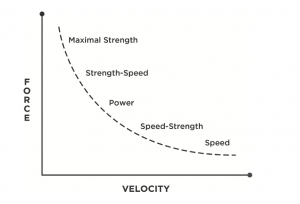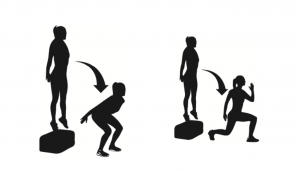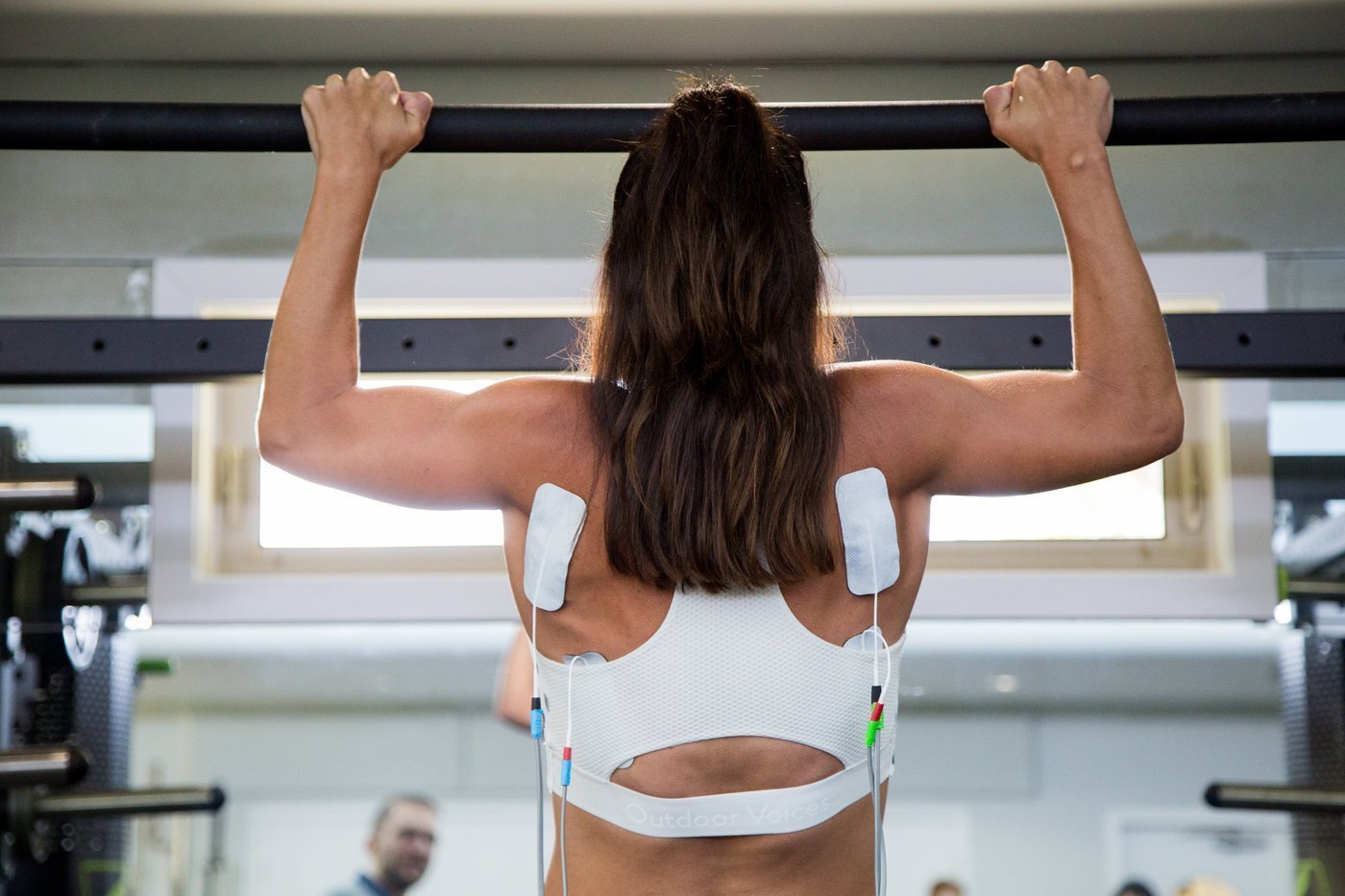In this week’s blog we are continuing our discussion of The Performance Pyramid, a model for laying a foundation for elite athletic performance. This week, we are looking at its application for speed and power athletes.
To compete at the highest levels, it’s important for speed and power athletes to work at every level of the performance pyramid. We are going to focus on sprinters, although the same principles apply to track and field and other athletes whose events also require explosive movements.
When it comes to these athletes, there are two main areas we really emphasize:
- Using plyometrics to achieve the optimal balance of velocity and strength
- Quantifying overtraining and avoiding submaximal training
Increased Speed Comes From Increased Power
Imagine a sprinter whose goal is to run a faster one hundred meter dash. Can running alone help them improve their time?
Not necessarily.
If they’re currently running one hundred meters in ten seconds, doing repeats at that same speed won’t make them any faster. As highly regarded sports scientist Yuri Verkhoshanksy wrote:
“If the athlete repetitively performs the same sport exercise with the aim of executing it at the highest power output, his motor control system always uses the same engram [or archetype]…Because of this archetype, the athlete encounters great difficulty in changing the biodynamic structure of exercise when he repetitively strives to increase its power output.” ¹
In other words, because of the specificity of adaptation, the athlete’s body will respond by continuing to run at exactly the same speed.
So how can they run faster?
To increase their speed, they need to increase their power, which is a combination of speed and strength. Where do they begin in terms of training? It depends on where they fall on the force-velocity curve.
The Force-Velocity Curve
The force-velocity curve is an important frame of reference for speed and power athletes who want to improve their performance.
The principle behind the curve is simple. If an athlete has no load, they can move faster (as in the bottom right of the graph). Throwing something very light, like a baseball, is an example of an activity in this area of the force-velocity curve.
At the other extreme, if an athlete is bearing a heavy load, e.g., squatting or deadlifting a heavy weight, they can’t move as quickly (as shown in the top left of the graph).
The goal of a sprinter, or any speed and power athlete, is to operate at the center of the force-velocity curve, where speed and strength meet. (Here, the load—which is the weight of their body without any external load or added weights—is in the middle of the curve. Body weight is more than a baseball, but less than having a barbell on the back with hundreds of extra pounds.)

Figure 1: The force-velocity curve.
To optimize at this point of power, athletes need to challenge the nervous system with both greater load and greater velocity. Techniques like plyometrics are one of the most effective ways to work the nervous system at this level.
Plyometrics
Originally developed by Soviet scientists in the 1950s, plyometrics exercises are designed to increase power by inducing muscles to exert high levels of force in short amounts of time.² In other words, these exercises combine both speed and strength.
Using specialized jumping techniques, plyometrics train muscles to turn on quickly and transition quickly from eccentric to concentric contractions. In the process, the muscles grow capable of absorbing increasing amounts of force/load.
Why is the ability to absorb heavy loads important for speed and power athletes?
With every stride, an elite sprinter must support up to five times their body weight and generate that amount of force in a fraction of a second – and do it on a single leg.³ For someone who weighs two hundred pounds, this could mean absorbing a thousand pounds of force on one leg with each stride.
It’s impossible to train the body to absorb that magnitude of force by lifting weights in the gym. However, it is possible with plyometrics exercises. Most plyometric exercises involve repetitive jumps. The advantage of these reactive exercises is that they train the muscle-tendon complex to become more spring-like. And there are several good resources on how to perform them.4

Figure 2: Plyometrics exercises include stepping off a ledge and landing in (a) a squat or (b) a lunge position.
In contrast to most traditional plyometrics programs, the NeuFit® approach to plyometrics training devotes a large amount of time and effort to landings—like stepping or jumping off a ledge and landing in a squat or lunge position, as shown in Figure 2. Instead of moving quickly from landings to rebounding jumps, we’ve observed that having athletes spend more time on the landings themselves produces better results.
For example, when we spent a summer working with Greg, an NCAA Division I running back who wanted to increase his power, we focused primarily on landings as we gradually raised the height of his plyometrics jumps. Within weeks, his body was able to absorb heavier and heavier loads, and he progressed to jumping off a twelve-foot ledge and landing in a squat position wearing a weight vest. (Note: This training technique is risky and isn’t designed for everybody. To minimize the risk of injury, athletes should only attempt these types of exercises under the supervision of a trained professional and with a significant amount of preparation. Please do not try this on your own and without proper guidance!)
By the end of the summer, Greg reached the point where he could absorb approximately fifteen times his weight, or between 3,500 and 4,000 pounds of force. Increasing his power made a major difference in his speed as well as his performance: though already a powerful athlete, he was able to knock several tenths of a second off his forty-yard sprint and increase his vertical jump by over five inches.
Next week, we will discuss quantifying overtraining and avoiding submaximal training.
Let’s charge forward (reactively and explosively) to better outcomes!
References
¹ Yuri Verkhoshansky and Natalia Verkhoshansky, Special Strength Training: Manual for Coaches (Rome: Verhoshansky.com, 2011), 110–111.
² Yuri V. Verhoshansky and Mel c. Siff, Supertraining, 6th ed. (Denver, Colorado: Verhoshansky.com, 2009).
³ Kenneth P.Clark, Laurence J. Ryan, and Peter G. Weyand, “A General Relationship Links Gait Mechanics and Running Ground Reaction Forces,” Journal of Experimental Biology 220, no. 2 (January 1, 2016): 247–58, https://doi.org/10.1242/ jeb.138057; Peter G. Weyand et al., “Faster Top Running Speeds Are Achieved with Greater Ground Forces Not More Rapid Leg Movements,” Journal of Applied Physiology 89, no. 5 (November 1, 2000): 1991–9, https://doi.org/10.1152/ jappl.2000.89.5.1991.
4 Two books on plyometrics that I recommend are: Donald Chu, Jumping into Plyometrics, 2nd ed. (Champaign, Illinois: Human Kinetics, 1998); James C. Radcliffe and Robert C. Farentinos, High-Powered Plyometrics (Champaign, Illinois: Human Kinetics, 1999).


